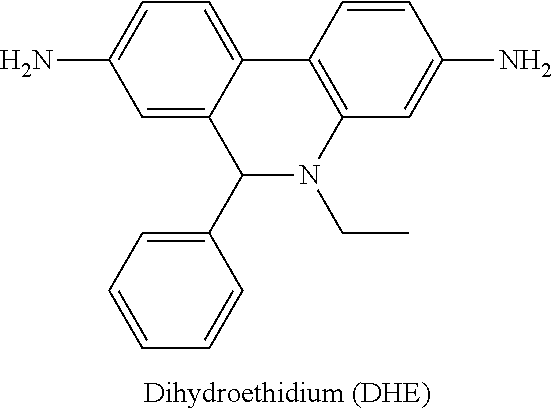Inventors at Georgia Tech and Emory University have engineered a new class of highly effective and easily accessible probes for the detection of intracellular reactive oxygen species. These reduced compounds have been shown to detect superoxide or hydroxyl radicals in nanomolar concentrations. This technology also can possibly detect ROS with high sensitivity in cell culture. Reduced dyes including, but not limited to, hydrocyanines, deuterocyanines, and/or other hydro- or deuterated dyes, such as deuterated leuco dyes, capable of detecting one or more reactive oxygen species, are described herein. The reduced dyes are generally prepared by reducing the oxidized dye with a reducing agent, such as sodium borohydride or sodium borodeuteride. For example, hydrocyanines and deuterohydroethydium (D-DHE or DDE) can be synthesized from cyanine dyes via a one-step reduction using a reducing agent, such as sodium borohydride (NaBH4) or sodium borodeuteride (NaBD4).
- Simple Synthesis - Easy one-step synthesis from commercially available cyanine dyes
- Dependable - Exceptional sensitivity
- Versatile - High stability and wide range wavelength tunability
- Diagnostics
- Non-therapeutics
- Cell Culture
- In Vivo imaging
Certain reactive oxygen species (ROS) play a central role in biology and medicine for their role in regulating cell signaling pathways and the development of oxidative stress leading to numerous inflammatory diseases. The lack of effective ROS sensing imaging probes has led to a limitation of their use in biology and application for disease diagnosis. There is a need to develop a molecular probe for the detection of ROS in cell cultures and in vivo.

